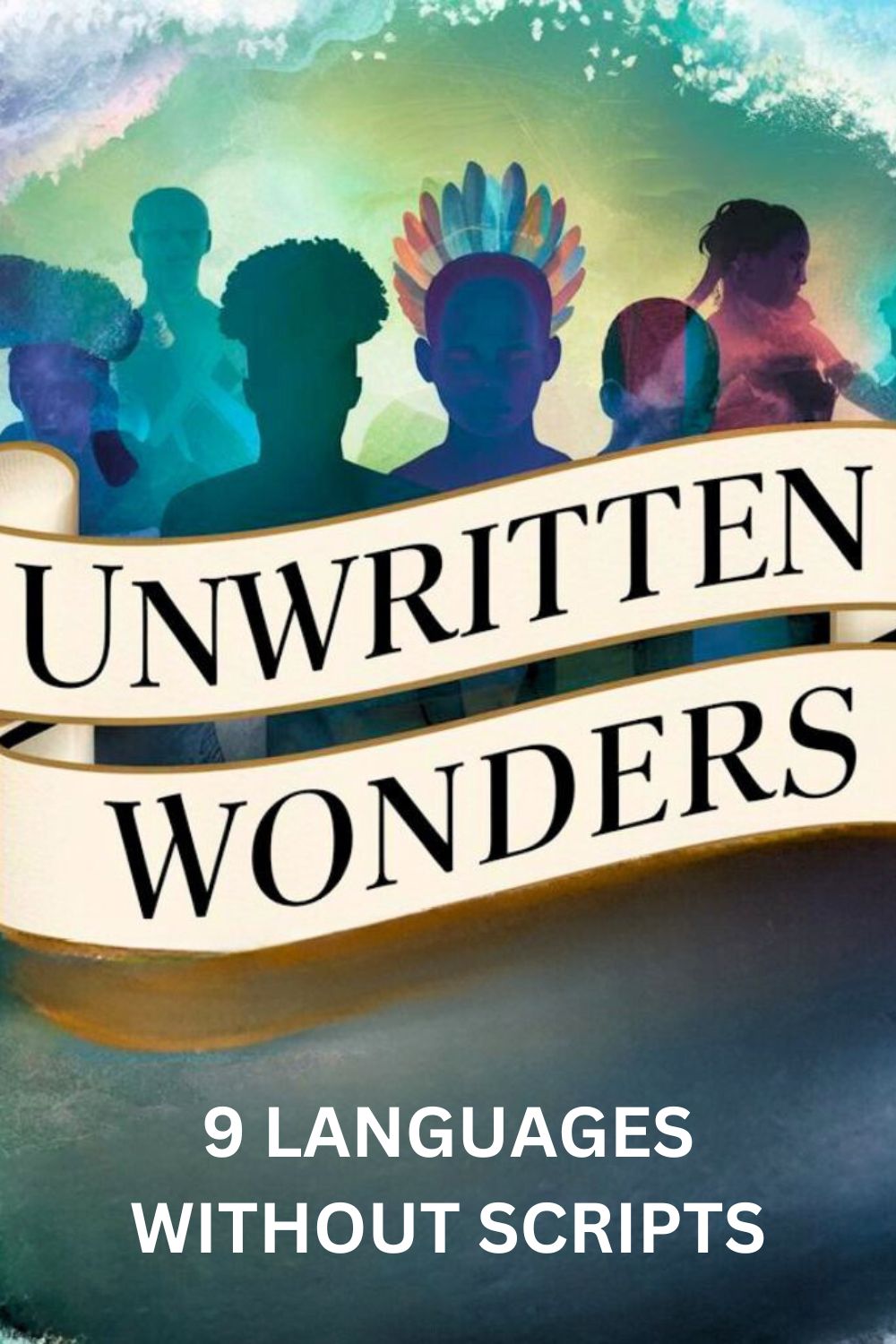Imagine a world where Shakespeare never penned a sonnet, Harry Potter’s adventures existed only in the whispers of wizards, and tweets were… well, nonexistent. Sounds a bit chaotic, right? Yet, there are languages around the globe that thrive solely through the spoken word, preserving culture and tradition without ever touching paper.
Join us as we explore the fascinating realm of unwritten languages, where stories are told, histories are remembered, and magic happens through the simple act of speaking.
What are unwritten languages?
Unwritten languages are those that lack a standardized, formal writing system. This means there are no official rules or symbols for recording the language on paper. However, this does not mean these languages can’t be written down at all. In many cases, linguists and language communities work together to develop orthographies, creating written forms to help document and preserve these languages.
1. Hadza
The Hadza people of Tanzania communicate using a mesmerizing click language. One of the last hunter-gatherer societies, the Hadza’s linguistic heritage is as ancient as their way of life.
Despite lacking a formal writing system, their oral traditions are robust, passed down through generations with each click and clack.
The Hadza language belongs to the Hadza people and is spoken by about 1,000 individuals. As one of the few remaining hunter-gatherer communities, the Hadza have maintained a way of life that is deeply intertwined with their linguistic practices. The language features a range of click sounds, a characteristic it shares with several other African languages.
Despite the lack of a written form, the Hadza people effectively communicate complex concepts, navigate social interactions, and preserve their extensive knowledge of the environment through oral tradition.
Efforts to document and study the Hadza language have been ongoing, but the community has preferred maintaining its traditional methods of linguistic transmission. The Hadza language’s richness lies in its ability to convey the nuances of its culture and environment, highlighting the importance of oral tradition in preserving the Hadza people’s identity and heritage.
2. Tsez
The Tsez language thrives in the remote mountainous regions of Dagestan, Russia. Known for its complex verb morphology, Tsez speakers have maintained their linguistic traditions orally. The absence of a writing system hasn’t hindered the intricate and rich storytelling culture of the Tsez people.
The Tsez language, also known as Dido, is spoken by about 15,000 people in the highlands of Dagestan. This language is notable for its highly intricate system of verb conjugation and noun classification, which makes it a subject of great interest to linguists. Despite this complexity, the Tsez people have no traditional writing system, relying instead on oral transmission to pass down their linguistic heritage.
The Tsez community has a strong oral tradition, with stories, songs, and proverbs playing a central role in cultural transmission. These oral practices are essential for the preservation of their language and the unique cultural identity it represents.
Linguists and researchers have been working with the Tsez people to document their language and ensure its survival for future generations, recognizing the vital role that these unwritten languages play in the global linguistic landscape.
3. Sentinelese
The Sentinelese language remains one of the world’s most mysterious and least documented languages. Spoken by the indigenous people of North Sentinel Island in the Andaman and Nicobar Islands of India, this language exists purely in oral form. The Sentinelese community’s strict isolation and resistance to outside contact have kept their linguistic heritage completely unwritten and unknown to outsiders.
This isolation has preserved their unique language, culture, and way of life, making Sentinelese a prime example of how a language can thrive without a formal writing system.
4. Warlpiri
Warlpiri is an Aboriginal language spoken by the Warlpiri people in the Northern Territory of Australia. Despite lacking a formal writing system, Warlpiri thrives through rich oral traditions that map the land and its history. The language is deeply intertwined with cultural practices and the environment, with oral storytelling, songlines, and ceremonies playing a crucial role in its preservation.
Songlines are particularly significant, serving as both navigational tools and spiritual maps, describing the creation and features of the land. These stories are passed down through generations, maintaining the Warlpiri’s connection to their heritage and territory. The language itself features a complex grammar and a rich vocabulary, reflecting the detailed knowledge of the natural world and social structures held by the Warlpiri people.
Efforts to document Warlpiri are ongoing, with linguists and community members collaborating to create educational resources and records. However, the primary transmission remains oral, emphasizing the importance of cultural context and communal learning in preserving the Warlpiri language.
5. Halkomelem
Halkomelem is a language spoken by the First Nations people in British Columbia, Canada. Divided into three main dialects—Upriver, Downriver, and Island—Halkomelem lacks a standardized writing system, thriving instead through rich oral traditions. These traditions include storytelling, ceremonies, and communal gatherings, crucial in preserving and transmitting the language.
Halkomelem’s oral culture is deeply connected to the natural environment and the community’s history. Elders play a vital role in passing down knowledge, ensuring that younger generations understand their heritage and cultural practices. Efforts to document the language include creating educational resources and recording oral histories, but the essence of Halkomelem remains rooted in its oral transmission.
The language reflects the spirit of the Coast Salish culture, focusing on kinship, the natural world, and spiritual beliefs. Despite the challenges of maintaining an unwritten language in the modern world, the Halkomelem-speaking communities continue to celebrate and preserve their linguistic heritage through their vibrant oral traditions.
6. Ainu
The Ainu language, indigenous to the Ainu people of Japan, is critically endangered. Historically spoken on the island of Hokkaido and parts of the Kuril Islands and Sakhalin, Ainu lacks a standardized writing system and is preserved primarily through oral traditions. These traditions include storytelling, songs, chants, and rituals that capture the rich cultural heritage of the Ainu people.
Efforts to document and revive Ainu are ongoing, with linguists and Ainu communities working together to create educational materials and record oral histories. Despite these efforts, the language remains vulnerable, with very few fluent speakers left.
The preservation of Ainu is crucial not only for the survival of the language itself but also for continuing the cultural practices and knowledge embedded within it. The Ainu language stands as a testament to the resilience of the Ainu people and their enduring connection to their ancestral traditions.
7. Chepang
The Chepang language is spoken by the Chepang people, an Indigenous group living in the hills of central Nepal. Chepang is primarily an oral language, with rich traditions of storytelling, folklore, and ritualistic songs that embody the community’s cultural and environmental knowledge. Despite lacking a formal writing system, the language plays a crucial role in maintaining the Chepang people’s identity and heritage.
Chepang oral traditions cover various aspects of life, including agricultural practices, spiritual beliefs, and social structures. Elders and community leaders are key figures in transmitting this knowledge, ensuring that younger generations understand their cultural roots. Efforts to document Chepang have been initiated, but the language remains predominantly spoken. Preserving Chepang is essential for safeguarding the unique cultural practices and wisdom of the Chepang people.
8. Kawaiisu
Kawaiisu is a Native American language traditionally spoken by the Kawaiisu people in California, USA. Despite facing the threat of extinction, it remains a vital part of the Kawaiisu community’s cultural heritage. Kawaiisu lacks a formal writing system and has been preserved primarily through oral traditions, including storytelling, songs, and rituals that convey the community’s history, values, and knowledge of the natural world.
The oral traditions of the Kawaiisu people are rich and varied, encompassing myths, legends, and practical knowledge about the environment. Elders are crucial in transmitting these stories and teachings to younger generations, ensuring the language and culture are passed down. The oral transmission of Kawaiisu also includes intricate ceremonial songs and chants that are integral to cultural practices and spiritual beliefs.
With only a few fluent speakers left, efforts to document and revitalize the Kawaiisu language are crucial. Community initiatives, including language classes, recording oral histories, and creating educational resources, aim to keep the language alive for future generations.
The preservation of Kawaiisu is essential for maintaining the cultural identity and continuity of the Kawaiisu people, providing a link to their ancestral past and a foundation for future cultural resilience.
9. Luri
The Lur people speak Luri in the mountainous regions of western Iran. Despite its rich cultural heritage, Luri lacks a standardized writing system, relying heavily on oral traditions for its preservation. The language is divided into several dialects, each reflecting the diverse lifestyles and environments of the Lur people.
Oral traditions in Luri are rich with folklore, poetry, and songs that convey the community’s history, values, and beliefs. Elders are crucial in passing down this knowledge through storytelling and communal gatherings. These oral narratives include tales of heroism, moral lessons, and intricate descriptions of the natural world, reflecting the deep connection between the Lur people and their environment.
Efforts to document and preserve Luri are ongoing, with linguists and community members working together to record the language and create educational materials. However, the essence of Luri remains rooted in its oral transmission, which continues to be a vital part of the Lur cultural identity.
Preserving the Luri language is essential for maintaining the Lur people’s unique cultural practices and wisdom, ensuring that their rich heritage is passed down to future generations.

Hey fellow Linguaholics! It’s me, Marcel. I am the proud owner of linguaholic.com. Languages have always been my passion and I have studied Linguistics, Computational Linguistics and Sinology at the University of Zurich. It is my utmost pleasure to share with all of you guys what I know about languages and linguistics in general.


